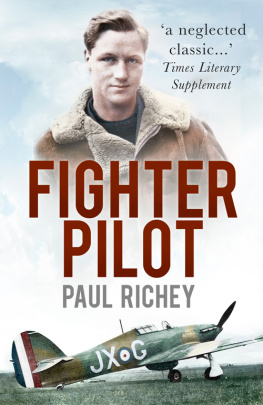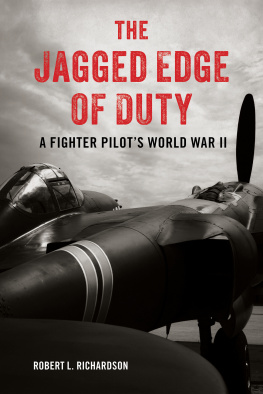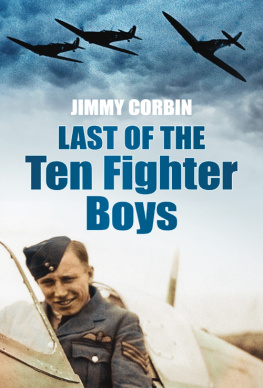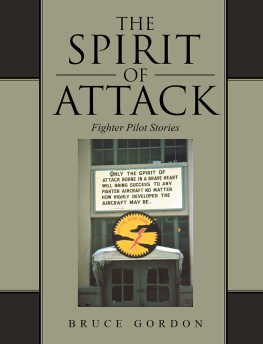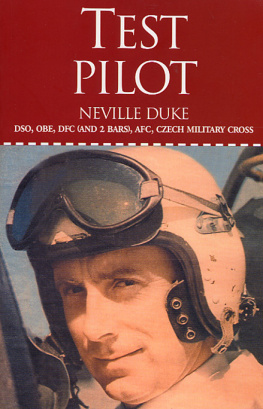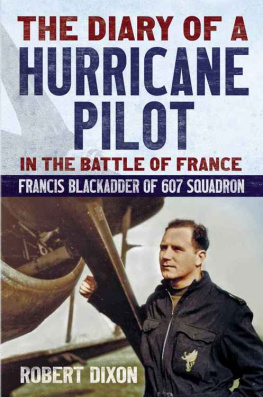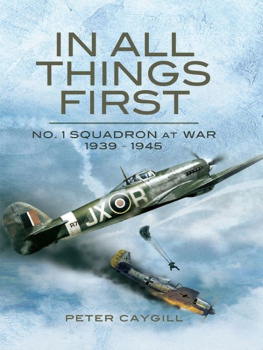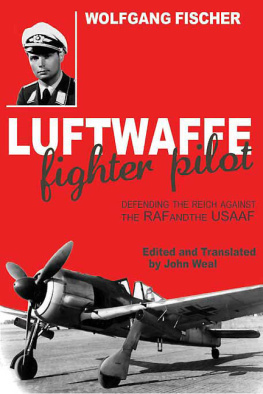
The best-known member of the squadron was to be Paul Richey, whose Fighter Pilot , based on his diaries and published in 1941, was one of the best books ever written about the experience and ethos of air fighting and still rings with unalloyed authenticity.
Patrick Bishop, Fighter Boys
No book published during this war gives a clearer picture of what air fighting is like. The danger, the hardship, the joyous companionship of squadron life on active service, the thrill of victory and the sadness of losses even at the height of the battle he kept a diary in which he recorded daily details he has been completely frank.
Times Literary Supplement
There are some things which each member of a people at war ought to know and believe for his souls health. This book is one of them. The climax is the writers last fight in France so skilfully told that we seem to share it with him when he was wounded and shot down.
Manchester Guardian (26 September 1941)
Probably the finest personal experience book to have come out of World War II. Detailed accounts of aerial combat and its effect on young inexperienced flyers has the feeling of total immediacy. It is as though he is writing at the moment of battle.
Manchester Evening News
The book [ Fighter Pilot ] described in a matter of fact way the outstanding work of that small band of British pilots sent to France facing incredible odds whilst Churchill kept most of the pilots and planes at home It sheds light on an aspect of the Second World War in the air often missing from other accounts it is a mesmerising read. What comes across is the incredible bravery amidst chaos and incompetence in the first days of the war. It gives a riveting account of life in those desperate times.
Alf Wilkinson, The Historical Association
before the Battle of Britain was the Battle of France No better account of that mad period has been written than the book simply entitled Fighter Pilot . It was the work of one of the bravest pilots of them all, Wing Commander Paul Richey DFC.
Anthony Hern, Evening Standard
Une histoire dont le souvenir mrite dtre pieusement conserv.
Professeur P. Hugon, President, Institut Franais de Navigation, in Navigation
Ouvrage remarquable Les Franais libres en parlent avec emotion.
Air Actualites
The first and finest story of a fighter pilot in World War II.
Group Captain Peter Townsend, Paris
Richey wrote a deeply human book without the prejudice cherished by so many Britons against their French Allies.
Wiebren Tabak, Netherlands Ministry of Defence Civilians Monthly
A must for any student of fighter tactics Wing Commander Richeys classic is copiously illustrated with photos of French, German and British pilots, the machines they flew and the old France that was soon to be swallowed up by Vichy and the Nazis.
Oxford Times
Paul Richeys experience flying with Number One Squadron in the Battle of France, is a neglected classic
After Hitlers Blitzkrieg started on May 10 1940, Richey was shot down three times in nine days. His account of the Hurricanes battles with Heinkels and Messerschmitt 110s thrill with their unfettered immediacy the tension is remarkable, the writing imbued with desperate urgency Fighter Pilot has gained in stature over the years it is a vital record not only in itself, but also in the battle with Hollywood revisionism for the public memory of the war.
David Vincent, Times Literary Supplement
Ive just finished Fighter Pilot which I am very ashamed to say I have never read before. Im not just trying to be polite when I say I think it is superb I think the best book Ive read by any fighting man. You make the whole thing live
Marshal of the Royal Air Force Sir John Slessor, GCB DSO MC, excerpt from personal letter to Paul Richey, written from RAF Hospital, Wroughton, Swindon (14 February 1970]
Our pick of the best books and memoirs on
WWII aviation
The literature on the air war during World War II is voluminous most readers though should find the following titles of interest:
The war opened in 1939 with the German Blitzkreig on Poland followed by the Sitzkreig during the fall and winter of 193940, then the assault on Scandinavia, France, the Low Countries and England.
Among the memoirs that cover this period are Antoine de Saint-Exuprys bittersweet Flight to Arras and Paul Richeys harrowing Fighter Pilot, which describe the Fall of France from the perspective of a French aviator/philosopher and a young Royal Air Force pilot thrown into the optimistically named Advanced Air Striking Force in MayJune 1940
Richard P. Hallion, World War II: A Readers Guide to the Air War, in Air and Space magazine, Smithsonian Institute, Verville Fellow at the National Air and Space Museum, Washington
Richey has an almost cinematic talent for describing the three-dimensional topography of a dogfight, as well as the mixture of terror and exultation that attends it.
Steven Poole, Guardian
9 St Jamess Place
SWl
8 March 1958
My Dear Paul
You might like to know that I have just re-read your Fighter Pilot and found it absorbing. Apart from the excitement of your fights you put us in the picture of a very queer period of history. How the Frenchman was out of touch with realism shows up amazingly clearly. As for your own adventures, you certainly had them!
I would like to congratulate you on your successful fights and the successful way you escaped from your failures. I would like to have read more detail of your own exploits but you were set on not saying too much
Well, heres luck!
from
Francis Chichester
I suppose you are in Mexico somewhere, so will ask Mike to pass this on.
[When requesting clearance from Sir Franciss son, Giles, to publish this letter in The History Press edition of Fighter Pilot , he told me that the time and date of the letter coincided with the great navigators crisis in his battle with cancer, making Franciss opinion all the more poignant and significant. Editor.]
[ Redacted paragraph for personal reasons. Editor.]

To my comrades
killed in action in the battle of France
And in memory of Professor Count Thierry de Martel,
who saved Paul Richeys life on 19 May 1940
and took his own life on 14 June 1940
It is only with the heart that one can see rightly;
What is essential is invisible to the eye
Antoine de Saint-Exupry
The photographs that supplement this edition were carefully selected by Paul Richey from unpublished contemporaneous photographs from the Etablissements Cinmatographique des Armes, Fort dIvry, France; the Bundesarchiv, Koblenz, Germany; the Imperial War Museum, London, in addition to photographs from his own and friends collections.
My warmest thanks go to these organisations and individuals for their help and generosity. With special gratitude to Emma Bourne for her fine advice and support, and to the team at The History Press inspiringly led by Michael Leventhal with Chrissy McMorris for their patience and guidance with this 2016 edition.
Diana Richey
CONTENTS

1
I caught my first glimpse of No 1 Squadron in 1937 on a brilliant summers day at the annual RAF Display at Hendon. Above a thrilled crowd a flight of four silver-and-red Hawker Furies looped, rolled and stall-turned in faultless unison. They were flown by Flight Lieutenant Teddy Donaldson and Flying Officers Top Boxer, Johnny Walker and Prosser Hanks 1 Squadrons formation aerobatic team. They were to go on to the international aerobatic competition at Zurich, where they astonished the Swiss, Italians, French and Germans by taking off in such dirty weather that the other teams refused to fly and performing their normal aerobatic routine with the cloudbase at 200 feet. They won.
Next page
